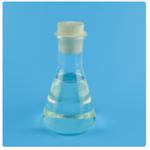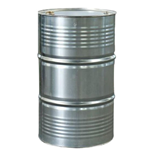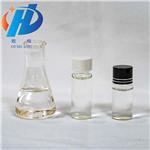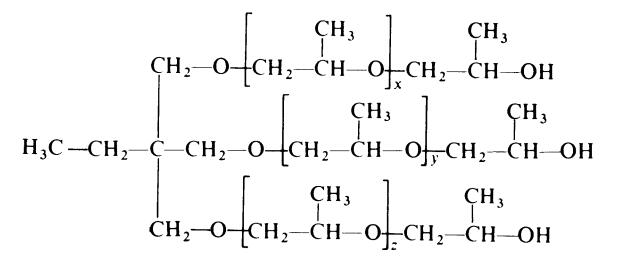- Poly(propylene glycol)
-

- $7.90 / 10000kg
-
2024-04-23
- CAS:25322-69-4
- Min. Order: 10000kg
- Purity: 99.99%
- Supply Ability: 100Tons
- Propylene Glycol
-

- $5.00 / 1kg
-
2024-04-22
- CAS:25322-69-4
- Min. Order: 1000kg
- Purity: 99%
- Supply Ability: 5000kg/week
- Poly propylene glycol
-

- $3.00 / 25kg
-
2024-04-19
- CAS:25322-69-4
- Min. Order: 1kg
- Purity: 99.92%
- Supply Ability: 50000tons
|
| | Poly(propylene glycol) Basic information |
| | Poly(propylene glycol) Chemical Properties |
| Melting point | -40 °C | | Boiling point | >300 °C | | density | 1.01 g/mL at 20 °C | | vapor density | >1 (vs air) | | vapor pressure | <0.01 mm Hg ( 20 °C) | | refractive index | n20/D 1.451 | | Fp | 230 °C | | solubility | H2O: <0.01 % (w/w) at 25 °C | | form | Viscous Liquid | | Specific Gravity | 1.005 | | color | White to light gray | | Water Solubility | PRACTICALLY INSOLUBLE | | Stability: | Stable. Substances to be avoided include strong oxidizing agents. | | LogP | 0.01 at 25℃ | | NIST Chemistry Reference | Polypropylene glycol 425(25322-69-4) | | EPA Substance Registry System | Polypropylene glycol (25322-69-4) |
| | Poly(propylene glycol) Usage And Synthesis |
| Chemical Properties | Viscous colourless liquid (whose viscosity depends upon the average | | Uses | Propylene glycol is used in the plastics industry for the manufacture of polyester fibers and alkyd resins. It is used as a main ingredient in automobile antifreeze and engine-cooling liquids and in brake and hydraulic fluids. It is used as a humectant in foods and cosmetics. It is used as a solvent for coloring or flavoring agents as well as in many oral, injectable or topical pharmaceuticals. | | Uses | Hydraulic fluids, rubber lubricants, antifoam
agents, intermediates in urethane foams, adhesives,
coatings, elastomers, plasticizers, paint formula-
tions, laboratory reagent. | | Definition | ChEBI: A macromolecule composed of repeating propyleneoxy units. | | Preparation | Propylene oxide may be polymerized by methods similar to those described
in the preceding section for ethylene oxide. Similarly, polymers of low
molecular weight and of high molecular weight are of commercial interest.
(a) Low molecular weight polymers
Poly(propylene oxide)s of low molecular weight, i.e. in the range 500-3500,
are important commercial materials principally on account of their extensive
use in the production of both flexible and rigid polyurethane foams.
At first, the most common polyether used in flexible polyurethane foams
was a linear poly(propylene glycol) with a molecular weight of about 2000.
This is prepared by polymerizing the oxide at about 160??C in the presence of
propylene glycol and sodium hydroxide. The resulting
polymer has the following general form:

The majority of the hydroxyl groups in the polymer are secondary groups
and are rather unreactive in the urethane reaction. Initially, this limitation
was overcome by the preparation of pre-polymers and by the
use of block copolymers with ethylene oxide. The latter products are 'tipped'
with poly(ethylene oxide) and are terminated with primary hydroxyl groups
of enhanced reactivity:

(It may be noted that straight poly(ethylene glycol) is not satisfactory for
foam production owing to its water sensitivity and tendency to crystallize.)
The advent of more effective catalyst systems, however, now makes it
possible for poly(propylene oxide)s to be used in the preparation of flexible
polyurethane foams without recourse to the above mentioned procedures.
Also, it is now common practice to use polyethers which are triols rather than
diols; these lead to slightly cross-linked flexible foams with improved load
bearing characteristics. The triols are produced by polymerizing propylene
oxide in the presence of a trihydroxy compound such as glycerol, 1,1,1-
trimethylolpropane or 1,2,6-hexane triol; the use of, for example, trimethylol�propane leads to the following polyether triol:

Polyethers of molecular weights in the range 3000-3500 are normally used.
For the production of rigid polyurethane foams, polyether triols of lower
molecular weight (about 500) are used so that the degree of cross-linking is
increased. Alternatively, polyethers of higher functionality may be used; these
are prepared by polymerizing propylene oxide in the presence of hydroxy
compounds such as pentaerythritol and sorbitol.
(b) High molecular weight polymers
Poly(propylene oxide)s of high molecular weight, i.e., greater than 100000
have been prepared by the use of initiators similar to those employed in the preparation of high molecular weight poly(ethylene oxide)s.
The most extensively investigated initiators have been organoaluminium and
organozinc compounds, generally with added co-initiators. As has been
noted previously, the structural unit of poly(propylene oxide)
contains an asymmetric carbon atom and the polymer can exhibit tacticity.
Both atactic and isotactic poly(propylene oxide) have been prepared. As
normally obtained, i.e. from D-L-propylene oxide, the isotactic polymer is
optically inactive but optically active isotactic polymer has been produced
from L-propylene oxide. Except for their optical activity, both forms of
isotactic polymer are very similar in properties; they are both crystalline and
have a melting point of 74??C. Isotactic poly(propylene oxide)s have not yet
found commercial application. Atactic poly(propylene oxide) has been in�vestigated as a rubber but does not appear to have been produced in any
quantity. | | General Description | Colorless liquid that is odorless or has a mild sweet odor. May float or sink in water. | | Reactivity Profile | Poly(propylene glycol) is an alcohol. Flammable and/or toxic gases are generated by the combination of alcohols with alkali metals, nitrides, and strong reducing agents. They react with oxoacids and carboxylic acids to form esters plus water. Oxidizing agents convert them to aldehydes or ketones. Alcohols exhibit both weak acid and weak base behavior. They may initiate the polymerization of isocyanates and epoxides. | | Health Hazard | The compound has a very low toxicity; few, if any, symptoms will be observed. Contact of liquid with eyes causes slight transient pain and irritation similar to that caused by a mild soap. | | Flammability and Explosibility | Non flammable | | Safety Profile | Poison by
intraperitoneal and intravenous routes.When heated to decomposition it emits
acrid smoke and irritating fumes. |
| | Poly(propylene glycol) Preparation Products And Raw materials |
|